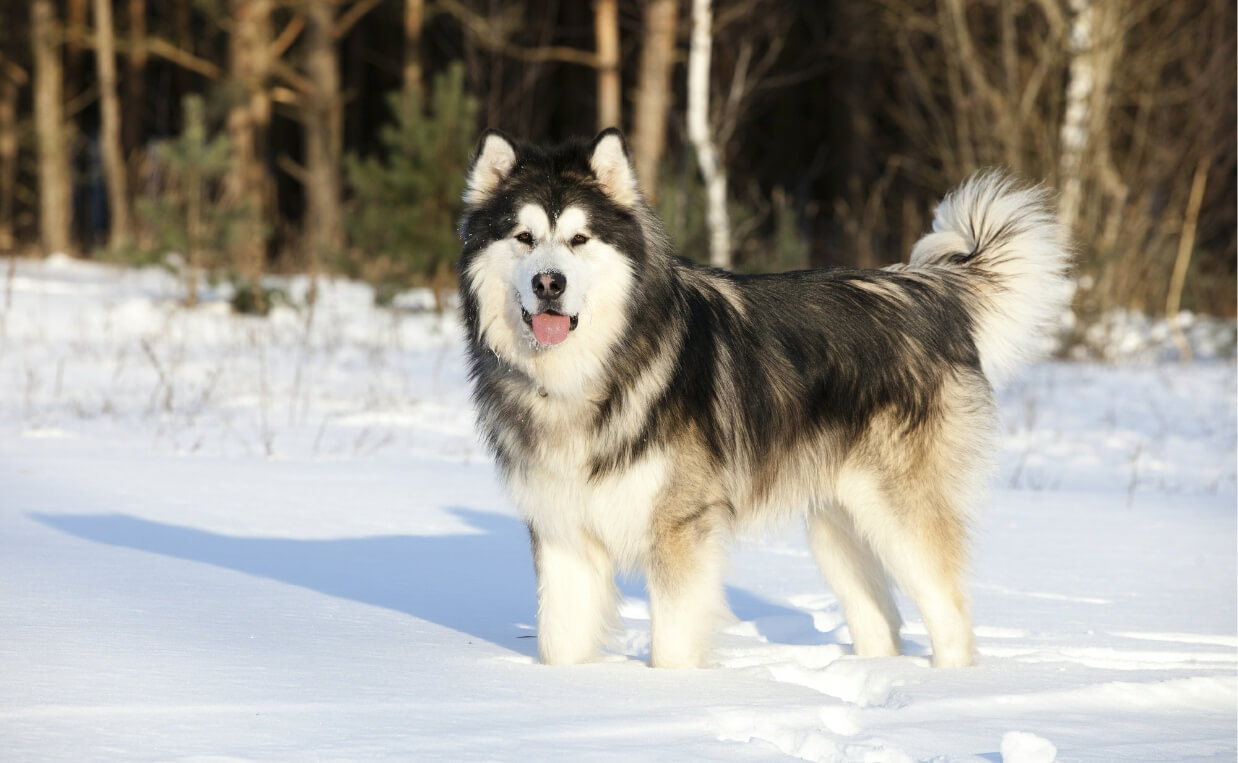
How old is the world’s oldest dog breed? And what was the first dog breed on earth?
The answer isn’t as clear cut as it might seem. While research published by Nature has suggested the earliest dogs might have been domesticated 20,000 – 40,000 years ago, fossil evidence points to dogs becoming domesticated about 14,000 years ago.
According to the Nature study, ancient dog breeds have DNA originating from before modern popular breeds like Labrador retrievers and poodles.
This list of the oldest eleven dog breeds is a compilation of data from the Canine Genome Project, Nature and Science Magazine.
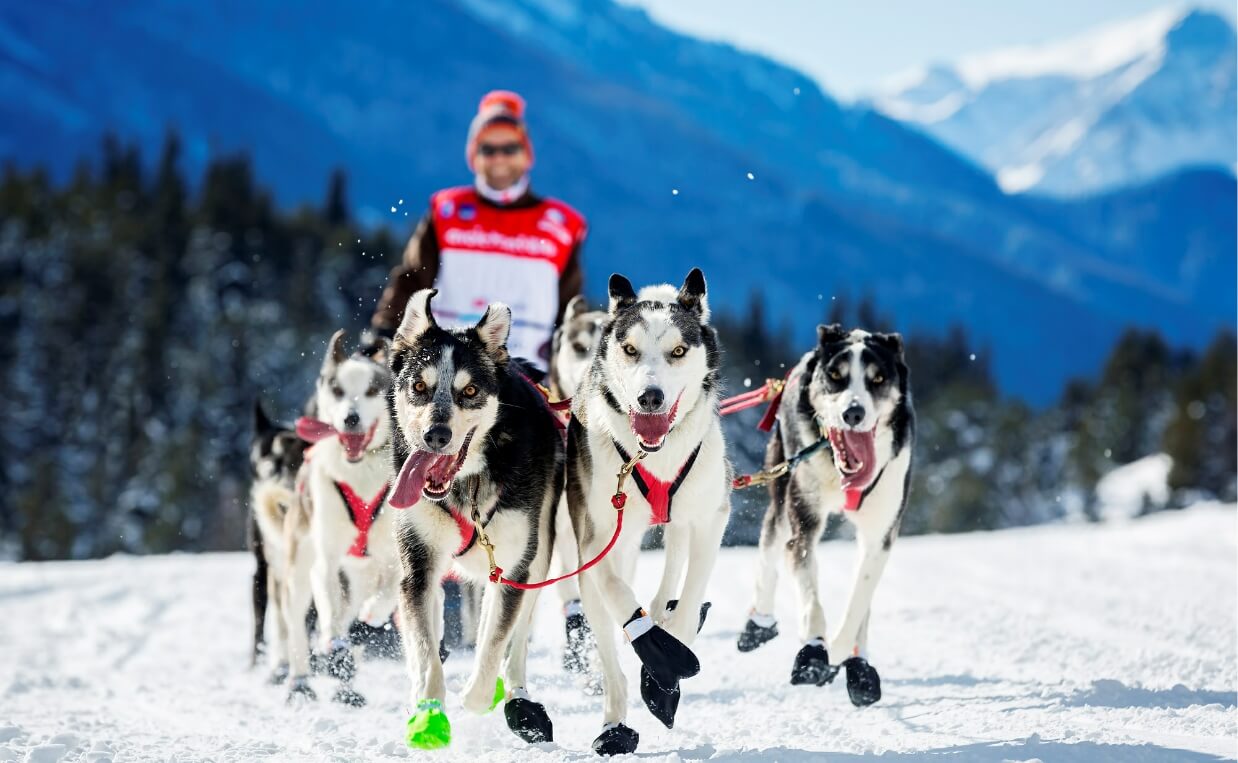
-
Greenland Sled Dog (9,500 years)
The Greenland sled dog may be the world’s oldest dog breed, at least based on the genome of a dog sequenced from an archeological site on Russia’s Zhokhov Island. These dogs are very similar to the modern Laika-type sled dogs, also known as the Siberian Husky breed. The bones were discovered with pieces of sledges, giving researchers evidence to suggest the Greenland sled dogs were a working transport breed. In addition to the Siberian Husky, Greenland sled dogs are related to Alaskan malamutes.
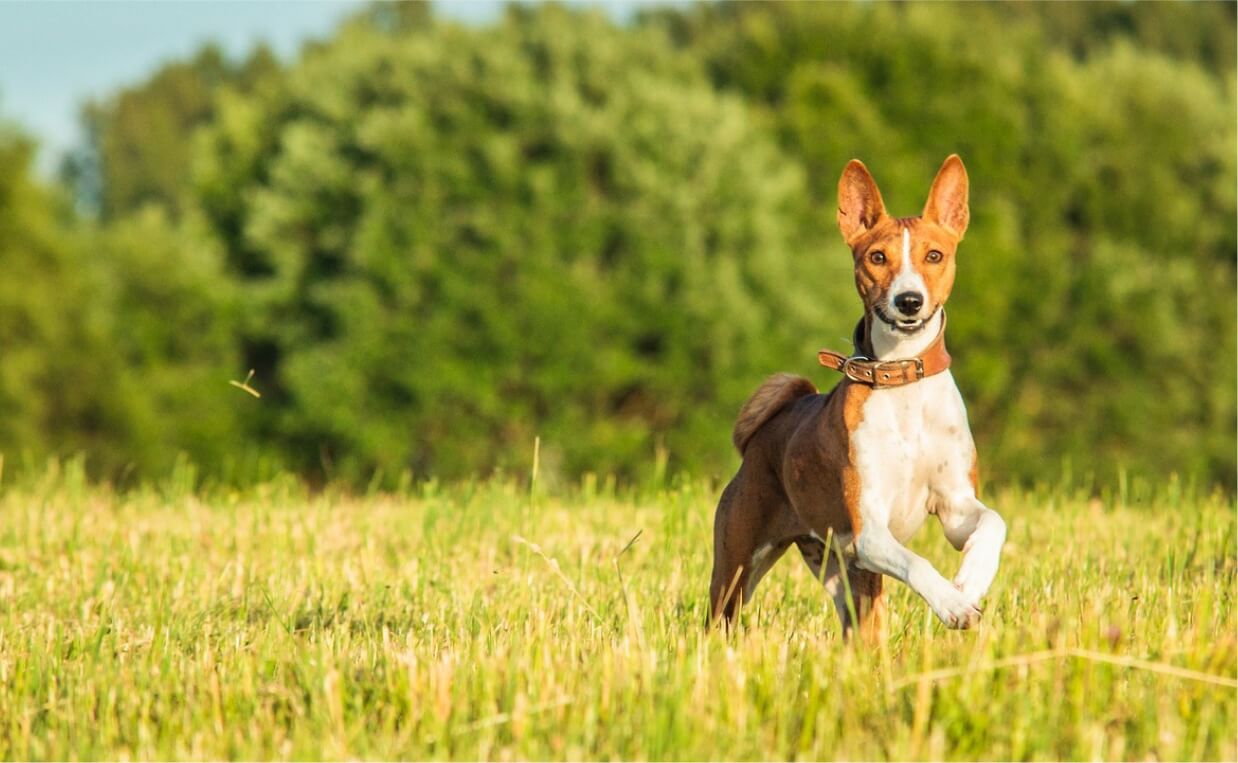
-
Basenji (6,000+ years)
The Basenji is an ancestor to Egyptian dogs, but some claim they are native to Africa. Basenjis don’t bark but make a sound similar to yodeling. They have an almost catlike personality, including the need to stay clean.
Basenjis have been nicknamed the “jumping up and down dog” because they have the ability to leap vertically in tall grasses. They need lots of exercise and mental stimulation. They are intelligent but can be stubborn. And don’t trust them off-leash; they will bolt out an open door and climb over fences when their hunting instincts kick in.
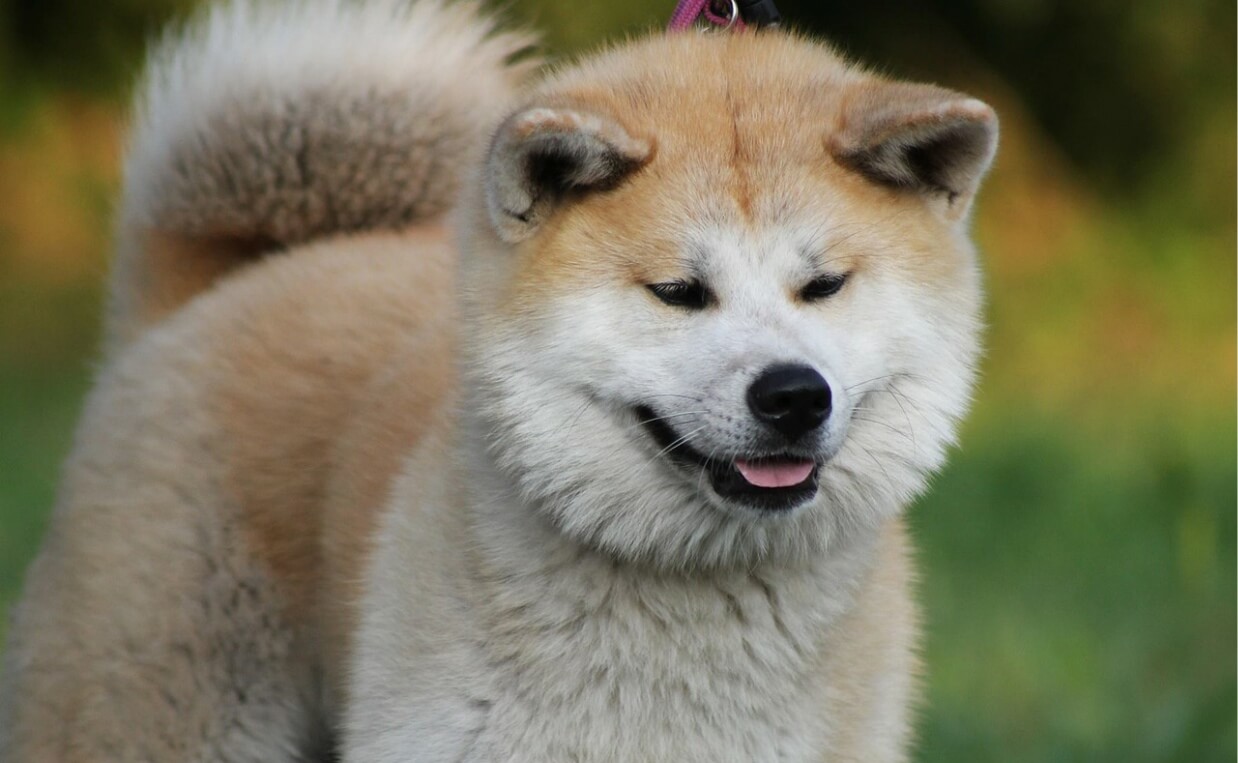
-
Akita Inu (5,000+ years)
There is significant debate about the origins of the Akita Inu, but modern-day scientists place the remains unearthed from the Kamikuroiwa Rock Shelter site in Japan as originating in the latter part of the Initial Jomon and the beginning of the Early Jomon period, which is approximately 5,000 year old and maybe older. Nevertheless, these are still some of the oldest dog remains on earth.
The Akita Inu is a native of northern Japan, and are sometimes called the Japanese Akita or Great Japanese dog. They were originally bred to hunt wild boar, deer, and bear in the cold winters of Northern Japan. They have a dense fur coat generally seen as shades of red, fawn, white, brindle, or sesame.
The Akita Inu is a fearless breed, known for being calm and dignified. They are very loyal to their family and are often used for therapy dogs, police working dogs, and family pets.
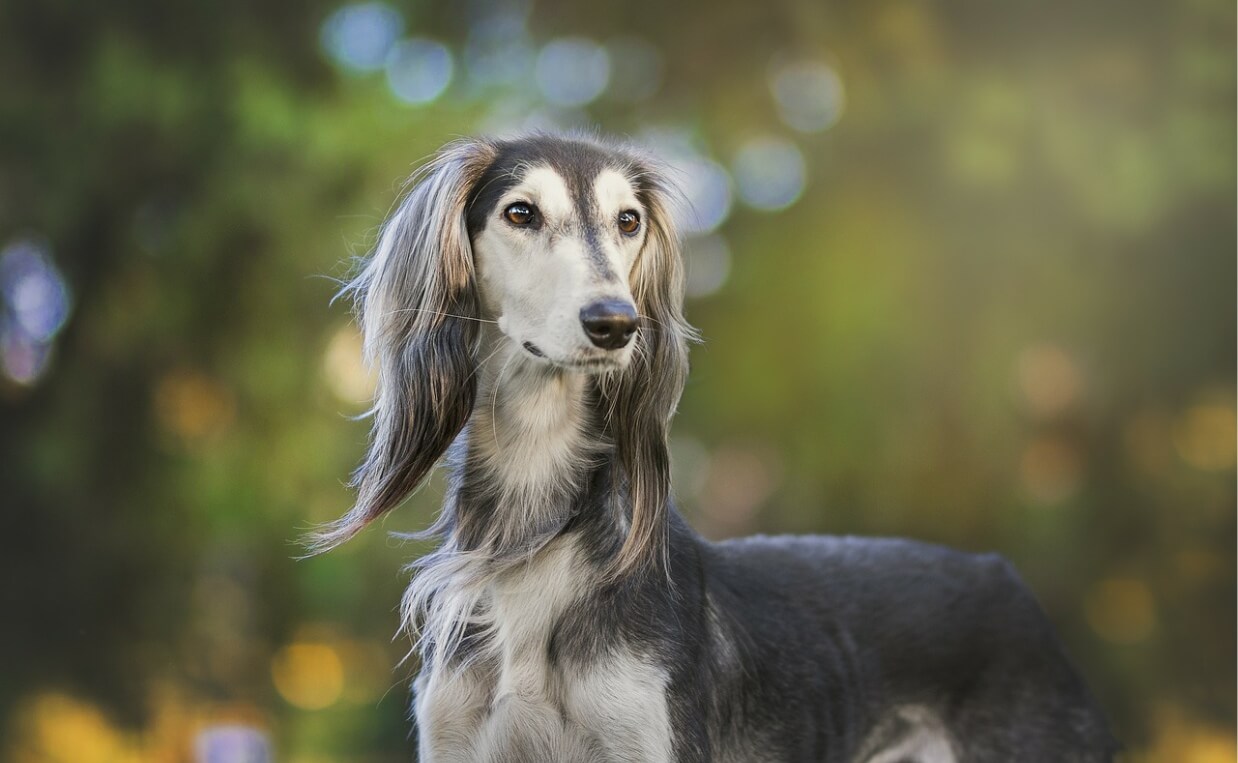
-
Saluki (4,000+ years)
There is strong archaeological evidence Salukis originated at least 4,000 years ago in the Fertile Crescent in the Middle East. Egyptian royalty considered the breed to be valuable and an honored companion; remains of this breed of dog have been found in the tombs of the upper Nile. They are listed as the oldest dog breed in the Guinness Book of World, but this is based on carvings found in Sumer of a dog which resemble a Saluki.
Arab tribesmen also revered these dogs and thought they were a gift from God (called “el hor”, which means “the noble”). The tribesmen paid as much attention to their Salukis as they did their Arabian horses. Salukis are still used for hunting gazelle and deer today in the Middle East.
Salukis can run up to 42 miles per hour. Since they can run much faster than humans, they work alone, which is what gives them their independent spirit. They are phenomenal jumpers and need to run at least once or twice a week. They come in many colors and patterns, including white, cream, fawn, golden, red, grizzle and tan, tricolor, and black and tan.
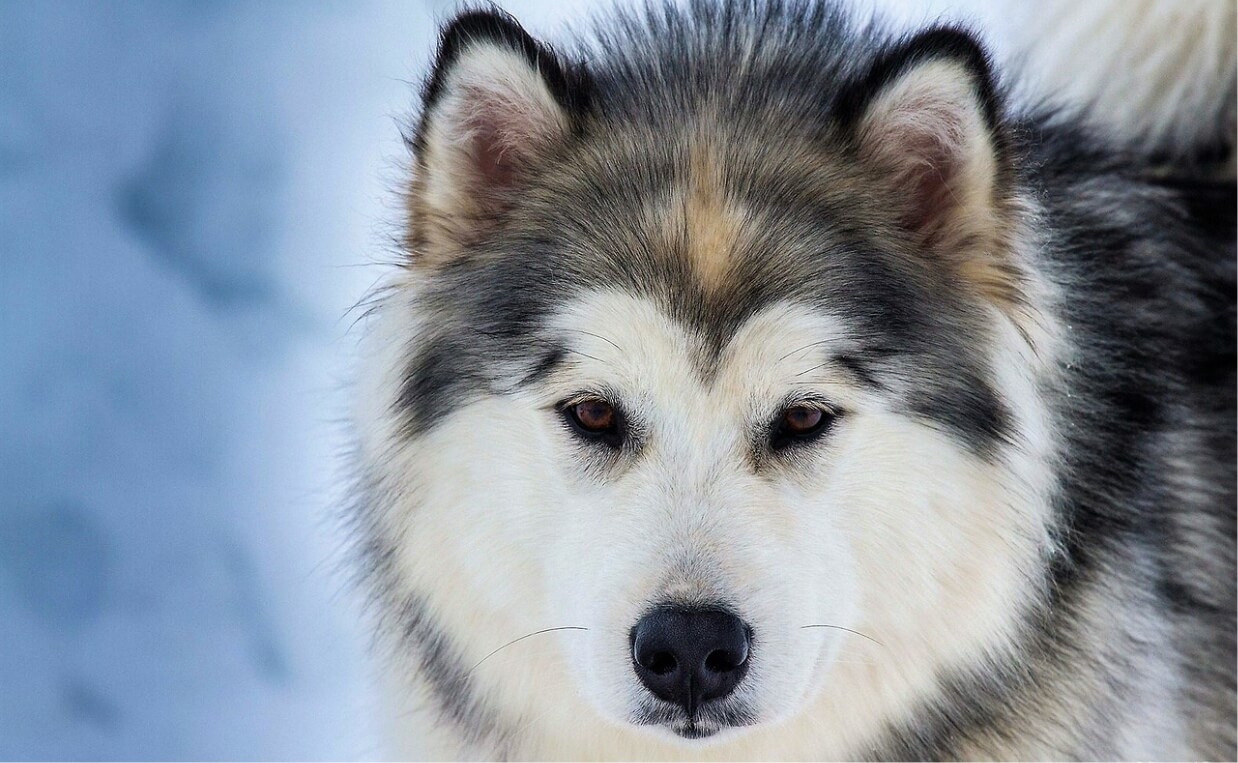
-
Siberian Husky (4,000+ years)
Siberian Huskies were first bred in Chuckchi Peninsula less than 100 miles from Alaska. Siberian Huskies are an iconic breed, known for sled dog racing and associated with Alaska’s vast frontiers.
Siberian Huskies are known for their moderate size. They rarely weigh more than 60 lbs., significantly smaller than the closely related Alaska malamute. They have striking blue eyes and are highly intelligent.
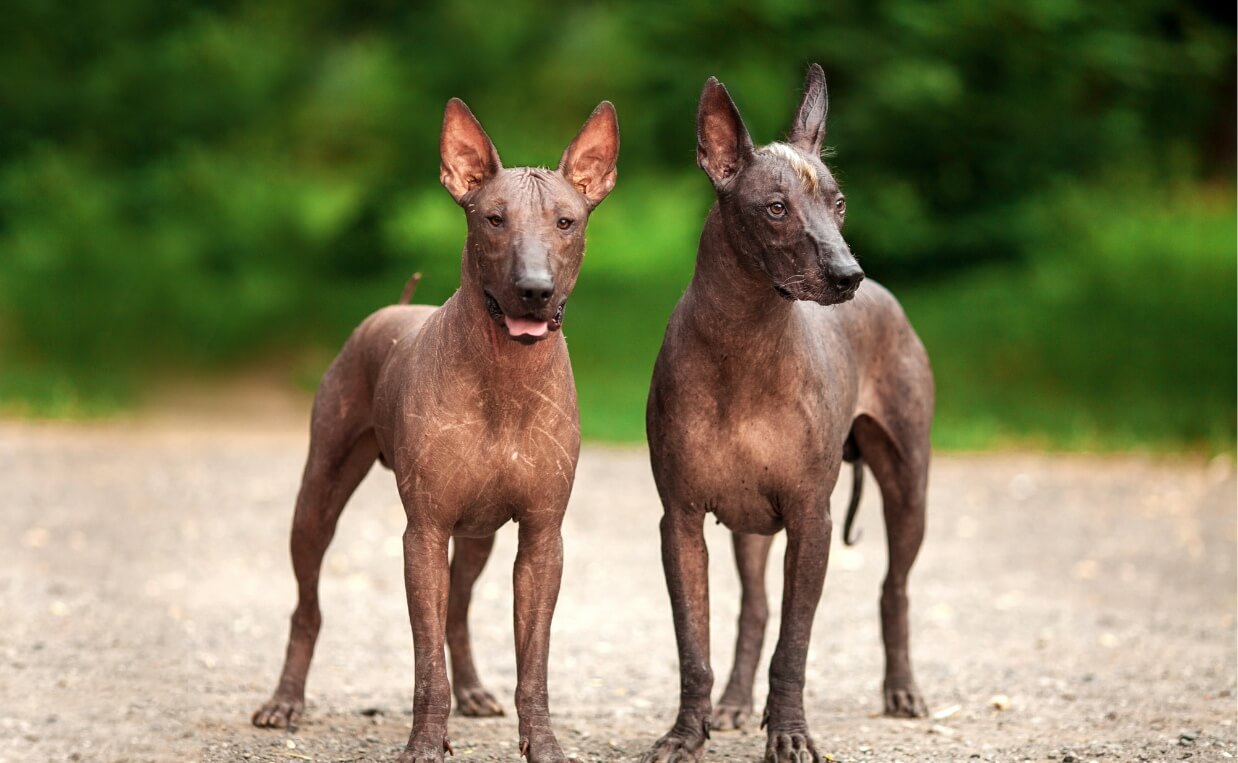
-
Xoloitzcuintli (3,500+ years)
The Aztec name for Mexico’s hairless dog is pronounced “show-low-itz-QUEENT-ly”, or “show-low” for short. One of the most ancient dog breeds of the Americas, researchers believe the Xoloitzcuintli accompanied early migrants from Asia to Mexico at least 3,500 years ago. It gets its name from two words in the Aztec language: Xolotl, the god of lightening and death, and itzcuintli, or dog. According to Aztec belief, the dog of Xolotl was created to guard the living and guide the souls of the dead through the dangers of Mictlán, the Underworld.
The xolo’s hairlessness is a result of a genetic mutation, also responsible for the dog’s lack of premolars. This distinctive dental trait makes it easy to identify the remains of xolos in archaeological finds.
Xolos fur-free bodies serve as excellent heat conductors, making them a kind of ancient hot-water bottle for the sick and elderly. They are keenly aware when you’re sick and can zero in on where it hurts.
Xolos were nearly eaten into extinction by Spanish conquistadors when they arrived in the New World. Today, they are experiencing a revival especially by people who are allergic to dog fur.
Xolos are considered intelligent, even-tempered, affectionate and playful dogs. They are protective and will bark at intruders. They also tremble easily, possibly because they lack warmth in their body or are prone to nervousness. They are loving and loyal to their family but can be wary of people and dogs they don’t know. They do best with lots of attention from their humans and don’t do well when left alone. They need at least 20-30 minutes of exercise every day.
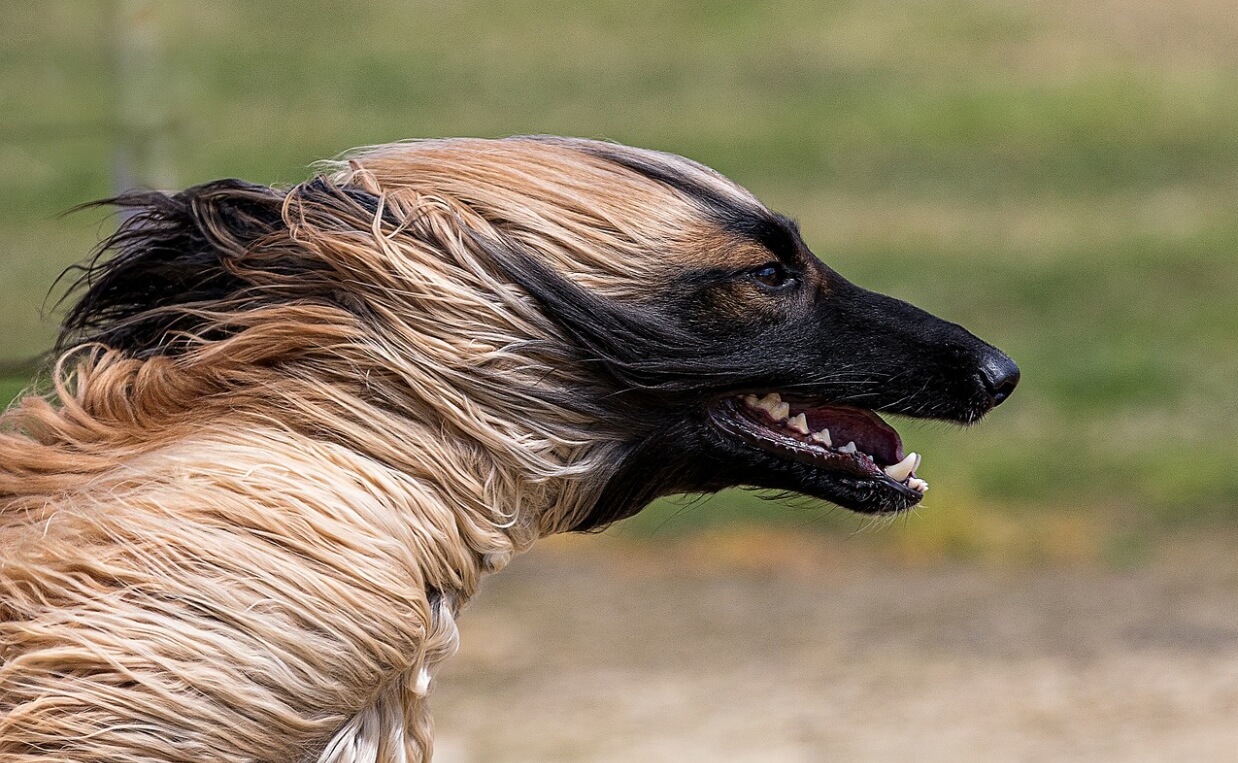
-
Afghan Hound (3,000+ years)
Afghan hounds come from Afghanistan, although some believe they came from Egypt. Afghans have long silky hair, a narrow face, and a thin build. They are a very elegant breed.
Afghan hounds are known for hunting antelope and leopard and can run up to 40 miles per hour. They can be aloof and difficult to train due to their stubbornness. They make good family dogs but require daily grooming and need a lot of exercise. They do well in warm and cold climates and adapt very well to their living circumstances.
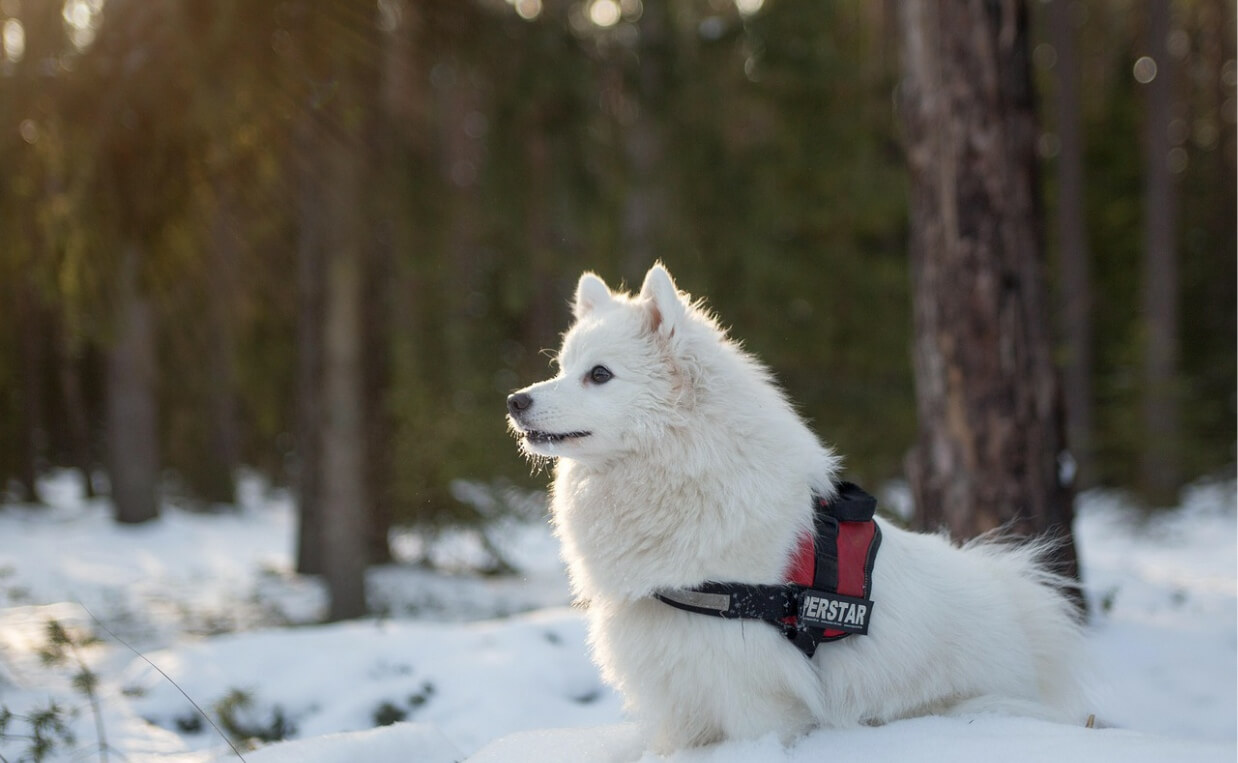
-
Samoyed – (3,000+ years)
Samoyeds are beautiful white or nearly-white dogs who are members of the Nordic spitz canine group, which originated in Asia. The Samoyed breed is one of 14 with direct ties to ancient wolves. They have a long, rich history as central figures in Siberian culture, joining them in family dwellings to provide critical warmth and companionship.
Samoyeds are energetic without being hyper, but they still need a lot of exercise. They were bred to thrive in sub-zero Siberian temperatures, but they do remarkably well in moderate temperatures, as long as care is taken for them not to get overheated.
Samoyeds are highly intelligent but independent and strong-willed. They enjoy learning new commands well into adulthood. They have instinctual digging habits, forged when humans needed them to dig shelters in deep snow. They are very vocal dogs who bark incessantly as well as using yips, woofs, and snorts to communicate. They also have natural herding instincts because their Siberian ancestors helped with nomadic reindeer hunts. They were bred to be powerful haulers and effective hunters but also close companions for families.
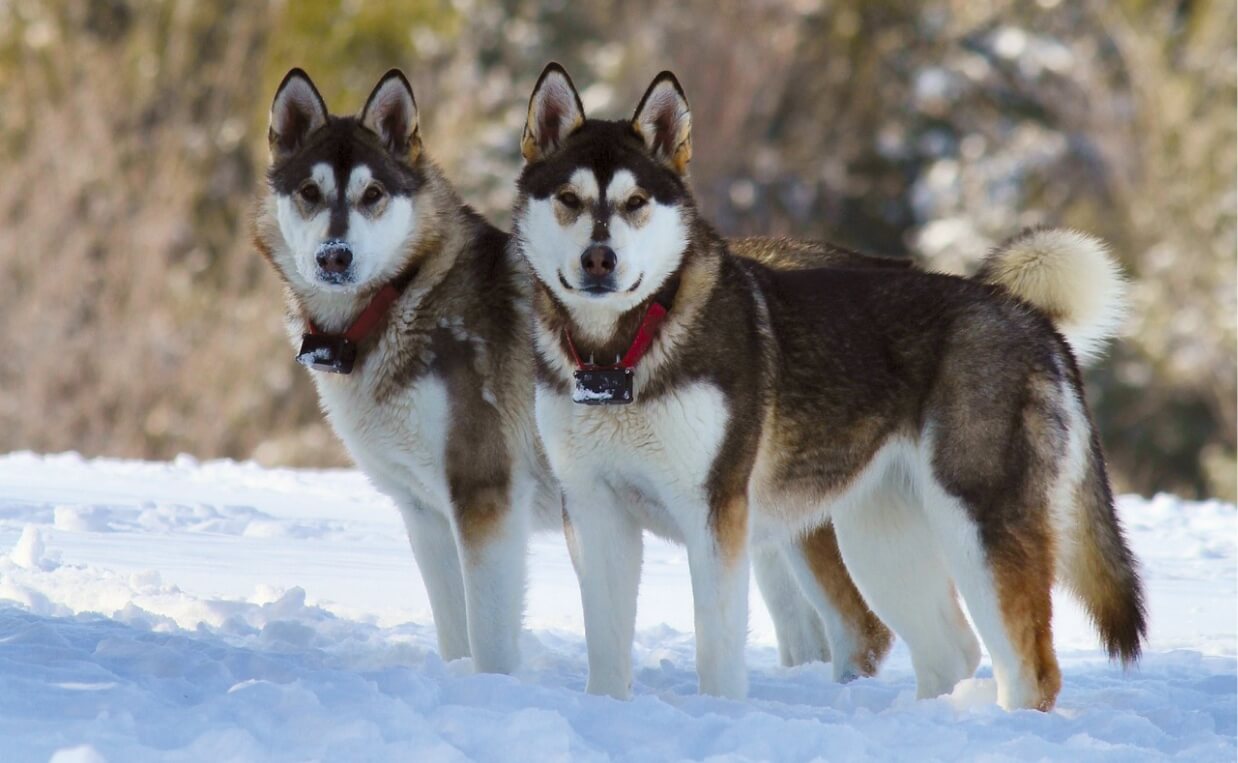
-
Alaskan Malamute (2,000 – 3,000 years)
The friendly and loyal Alaskan Malamute worked and lived with the Inuit native tribes in North America, who depended on these dogs for their very survival. The breed name was taken from the Mahlemuts, an Inuit tribe that settled along the Kotzebue Sound in northwestern Alaska.
Malamutes were mostly used for pulling heavy sleds at slow paces, but other jobs including being pack dogs for supplies, hunting seals and other Arctic mammals, and protecting their people from bears. They are confident, independent and strong-willed, but are playful and mischievous. Malamutes crave attention from people but can be aggressive toward unfamiliar dogs.
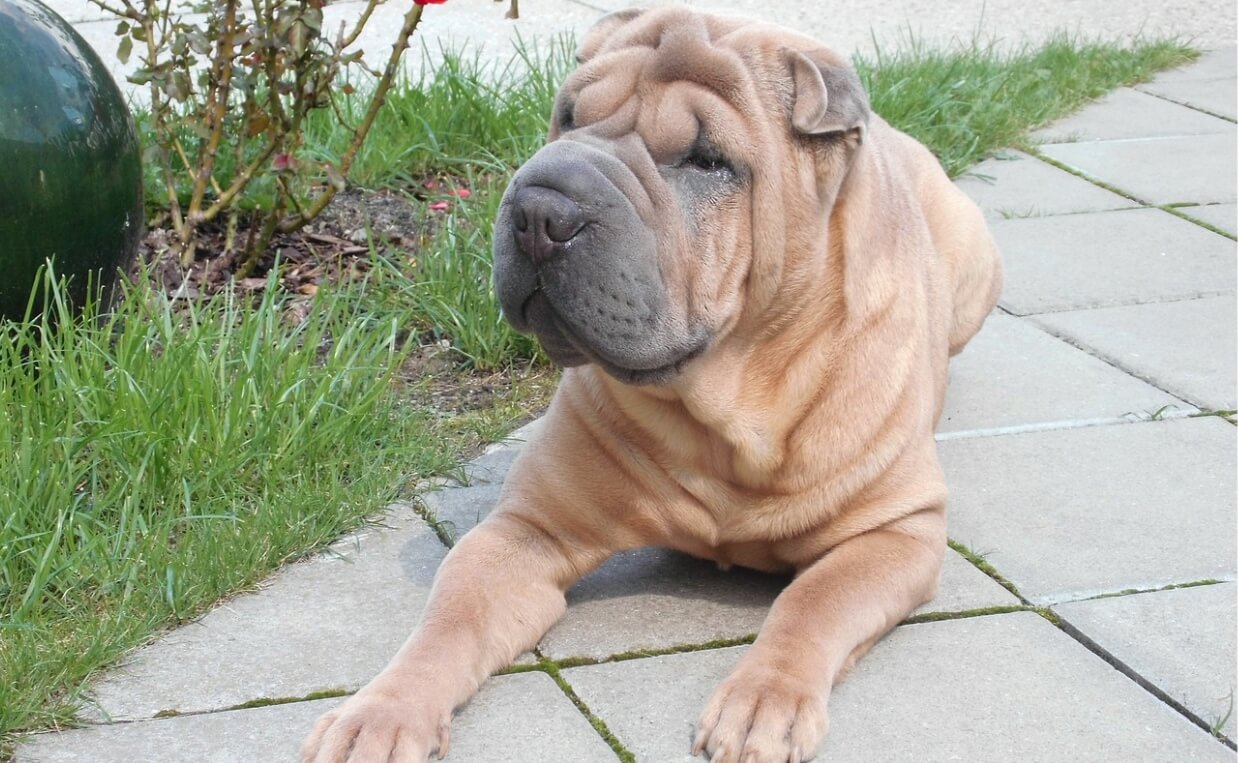
-
Chinese Shar Pei (2,200+ years)
The Chinese Shar Pei dog breed is believed to have originated around 200 B.C. in the area around Tai Li in China. They were originally bred to guard the royal palace and protect the royal family. Their loose skin was designed to protect them in dogfights, giving them the opportunity to break loose without mortal wounds to their internal organs.
Interestingly, the Shar Pei breed almost went extinct in the 1940s, when communist law initiated a hefty tax on all dogs. The breed was saved when Life Magazine published an issue with a Shar Pei on the cover, at the plea of a breeder who lived in Hong Kong.
Shar Pei have a black-blue tongue like Chow Chow’s, though there is no genetic link between the two breeds. “Shar Pei” means “sand skin” in Chinese. It translates to “rough, sandy coat”. This is one of the distinctive qualities of the Shar Pei, along with its wrinkled skin.
Shar Pei are strong, regal, independent guardians famous for intelligence and loyalty. Bred for protection, they are suspicious of strangers and other dogs. They are generally calm and serene dogs but have strong and tenacious guarding behaviors.
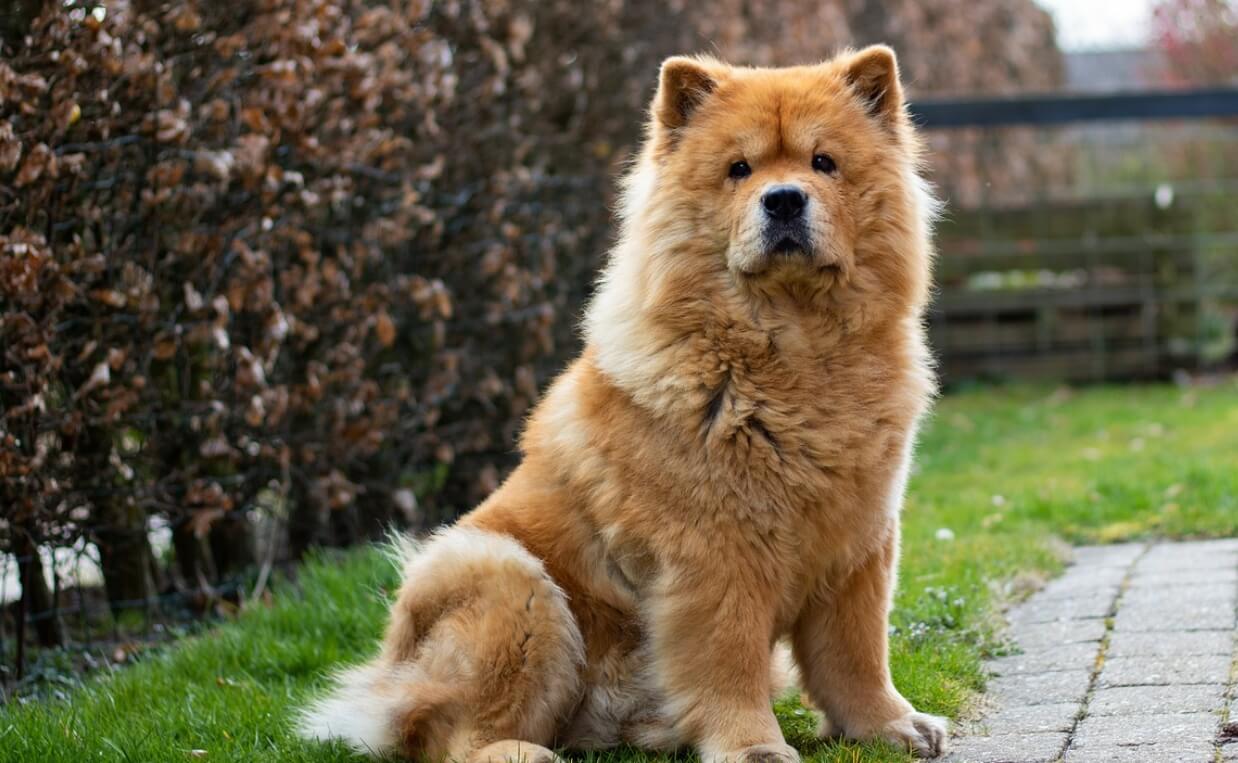
-
Chow Chow (2,000 years)
The chow chow dog breed originated in northern China, recognized for its bear-like appearance and blue-black tongue. The chow chow is loyal to his or her family but is reserved and aloof with strangers. They were bred as temple guards in Asia.
Chow chows are reserved, independent dogs with a rough or smooth coat. Though the breed has a reputation for being aggressive, most chows are faithful, calm dogs who make excellent companions. They tend to do best as a one-person dog, focusing their loyalty on a main person. However, with proper training and socialization, they can get along with all family members, although they do best with older children.
Final Thoughts
While there is a great deal of research about the history of dogs, and many scientific papers mention ancient dog breeds, scientists do not agree on many ancient breeds and which ones deserve to carry this classification.
One common hypothesis about ancient dog breeds is that a now-extinct species of wolves evolved into early dogs in Asia and migrated with human groups both south to Africa and north to the Arctic. The Nordic breeds such as Alaskan Malamute and Siberian husky are said to have the closest genetic and visual link to the wolf.
Ancient breed dogs tend to be very stubborn and independent. This is because they are genetically closer to wolves and still maintain certain primitive characteristics. Ancient breed dogs will be more difficult to train and will require high maintenance. If you decide you want one of these breeds, be prepared to study the breed and do the extra work of caring for them properly.
Do you have an ancient breed dog? Do you recognize the hallmark “stubbornness” and “independence” of the breed? Please share your experience in the comments below…

 What Colors Can Dogs See? A Look into Canine Color Vision
What Colors Can Dogs See? A Look into Canine Color Vision 7 Ways to Tell Your Dog You Love Them
7 Ways to Tell Your Dog You Love Them 9 Dog Sleeping Positions and What They Mean
9 Dog Sleeping Positions and What They Mean How to Introduce Your Dog to a New Baby
How to Introduce Your Dog to a New Baby Are Dogs Smarter Than Cats?
Are Dogs Smarter Than Cats?






You forgot one of the oldest dog breeds – cnaani dog
Great point! The Caanan Dog, or a breed very similar to it, has been found in archeological digs in the Middle East dating 9,000 years ago. The Caanan Dog is a very rare dog today, with only 2,000 to 3,000 dogs known to be in existence in 2012. Thanks for pointing this breed out – and for stopping by the Canine Campus blog!
Hello from Greece! Theres is also the Cretan Hound (Minoan civilization that thrived roughly from 3000 BC). And another ancient (but still exist today) Greek breed Molossus of Epirus (dated from 1500-500 B.C.) There are over 10 modern popular breeds today (Great Dane, Boxer, St. Bernand, Newfoundland, & even Pitbulls) that originated from Molossus of Epirus, but in Greece today there is still the real breed very close to the ancient one.
Interesting! Thank you for sharing about these little-known ancient breeds. I appreciate learning about them. I hope you’ll visit our blog again soon!
How old is the Llasa Apso breed?
According to the American Kennel Club, the Llasa Apso breed originated in Tibet at least since the year 800 A.D., making the breed at least 1,220 years old.
What about Maltese?? They small dog breed is recorded to about around 8,000 years old.
According to the American Kennel Club (AKC) the Maltese breed of dog was likely introduced to Malta by the Phoenicians, who ruled the Mediterranean from 1550 to 300 B.C. Also, most Maltese scholars believe terriers, spaniels or even spitzes were the antecedents of the Maltese breed. Clearly, there are several other breeds who should have been included in the list – thank you for pointing out the ancient breed of Maltese!
And what about the Spanish galgo (and podencos)? I’ve read that they were brought to the Iberian peninsula by the Phoenicians, and adopted by the Gauls (Celts) who lived there. They called the galgo ancestor “Vertrigus”. They most likely are descendants of Bedouin salukis.
Yes, you’re right! These are both very rare breeds today. It is thought the Spanish Galgo dog breed was brought to the Iberian peninsula nearly 3,000 years ago. The Podencos breed originated in Africa around 6,000 years ago. The theory is they originated from the Pharaoh Hound of Egypt and the Basenji from Central Africa. Thank you for bringing these breeds to our attention!
I own Greenland dogs, and they are for sure independent. Stubbornness a little more individual in my experience, but it is not wrong to say they are.
I’m sure they needed to be independent to be good sledding dogs. Thanks for stopping by the Canine Campus blog! Hope to see you back again soon!